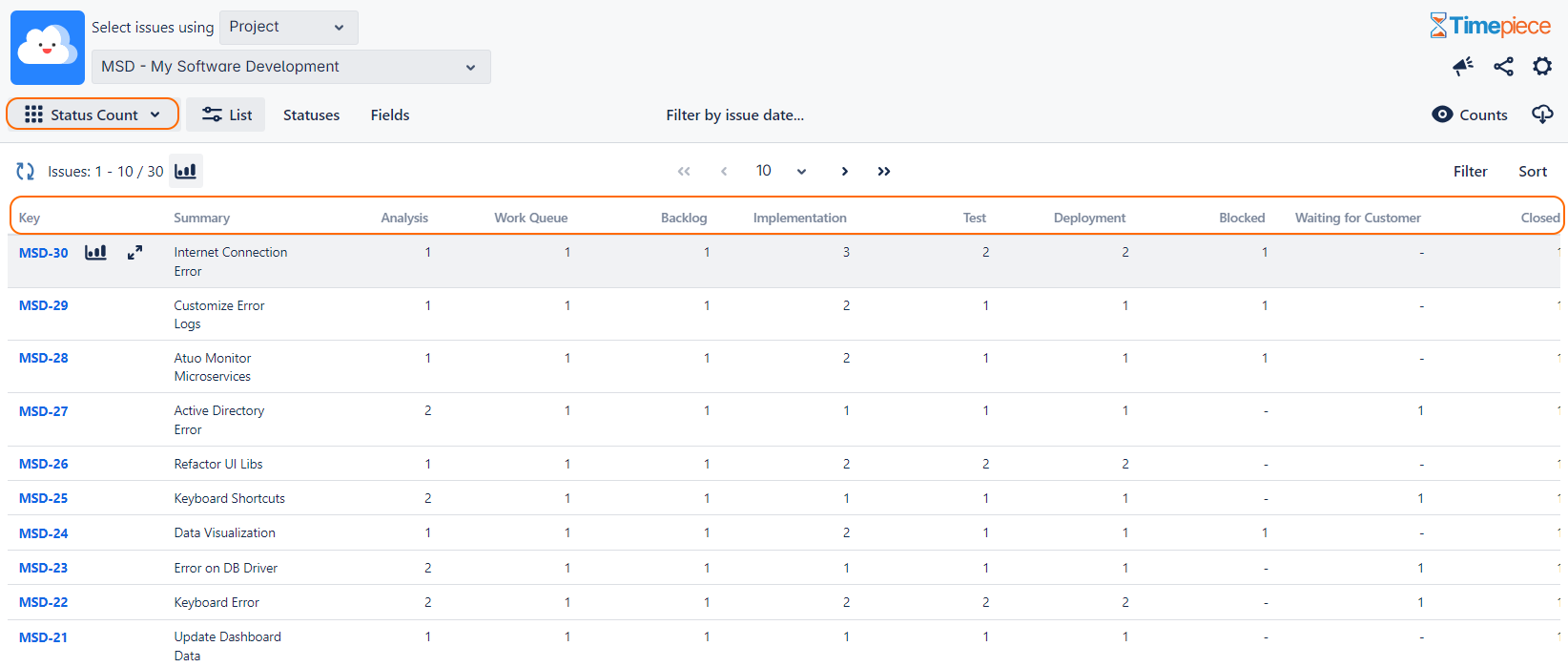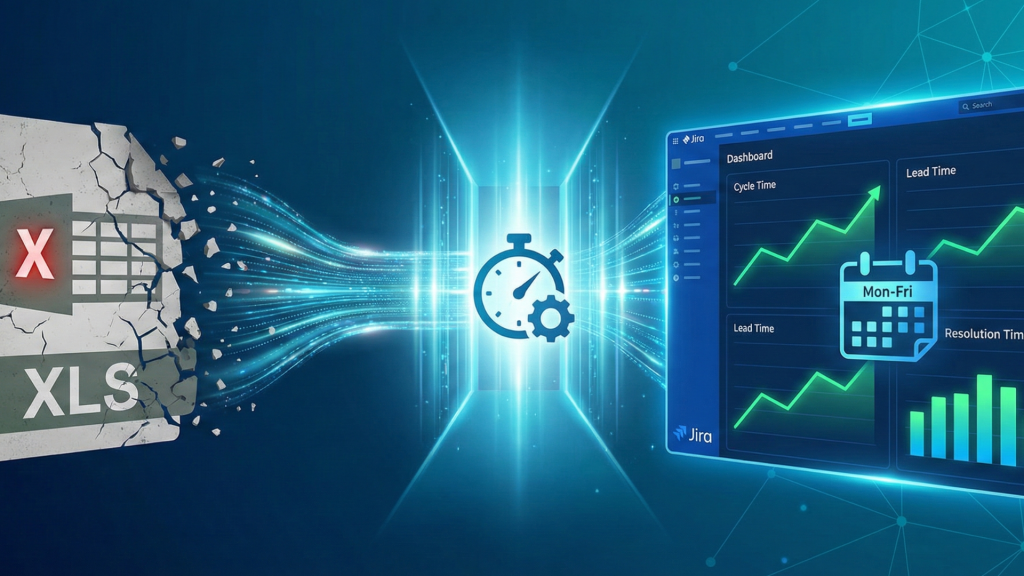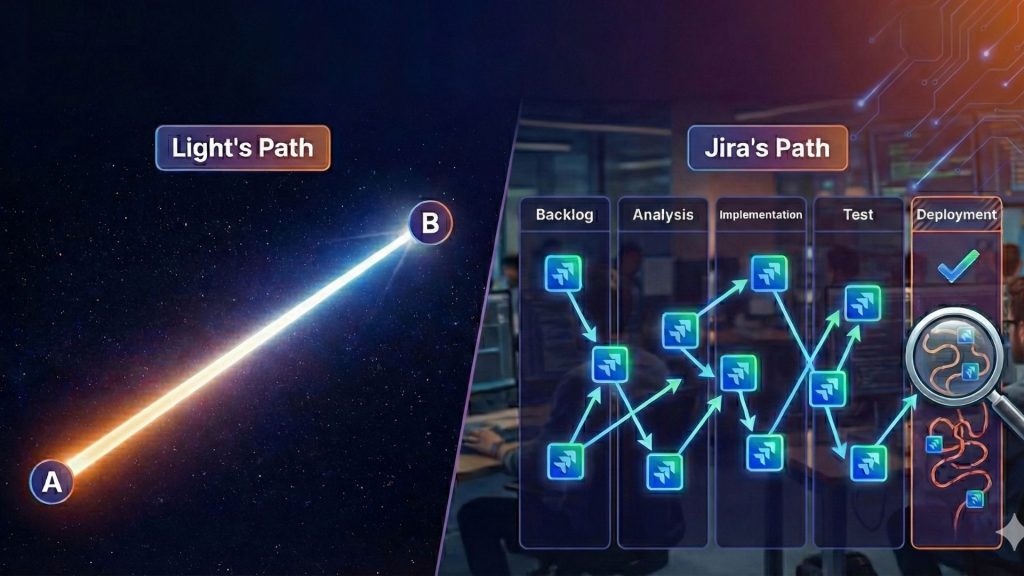Introduction
In Agile development, each sprint aims to deliver a specific set of tasks within a fixed time frame. However, issues jumping between sprints in Jira are a common problem, often caused by poor estimation or ineffective planning. As a result, teams waste valuable sprint time on tasks they can’t complete.
This article shows how you can detect such issues, and more importantly, improve sprint estimation accuracy using Timepiece – Time in Status for Jira.
Why Issues Jump Between Sprints in Jira: Key Challenges
When issues jumping between sprints become frequent, teams face several challenges:
- They waste time on undeliverable work.
- They lose track of predictable sprint velocity, making future planning difficult.
- Their poor estimates delay delivery and disrupt timelines.
Therefore, by understanding why these carry-overs happen, teams can take concrete steps to improve how they execute each sprint.
How Timepiece Helps Track Issues Jumping Between Sprints in Jira
Timepiece – Time in Status for Jira helps teams track how many times issues switch sprints and recognize recurring patterns that hurt planning. With the right reports, you can move from guesswork to data-driven improvement.
Track Sprint Movement with Any Field Duration Report
One powerful tool is the Any Field Duration Report, which shows how long each issue stayed in each sprint. Ideally, issues show a value in just one sprint column. However, if an issue moved across multiple sprints, you’ll see values in more than one column—indicating trouble.

How Many Times Did the Issue Move?
Whenever a team pushes an issue from one sprint to another (or to the backlog), they must re-estimate, re-prioritize, and re-plan it. This rework becomes clearly visible through the Status Count Report.

In this report, if working statuses (like “In Progress”) show values greater than 1, that means the team had to rework the issue. The higher the number, the more effort they spent repeating work. Therefore, you can sort this report by status counts to bring the most problematic issues to the top.

How Bad Is It?
So, some issues jumped between sprints—but how bad is the situation really? Did the team almost complete them, or did they barely start?
To find out, use the Any Field Duration Report again—this time by selecting Sprint and Status as history fields.

With this view, you’ll see which issues moved through Analysis, Development, and Testing in multiple sprints. These were close to completion, which means the team made only minor estimation errors.
In contrast, other issues remained stuck in early statuses like “Selected for Development” or “Analysis.” These indicate deeper problems in pre-analysis and larger estimation issues.
Conclusion
If you lead a team, keeping an eye on issues that jump between sprints is essential for better planning and smoother delivery. By detecting issues jumping between sprints in Jira, you can take proactive steps to reduce rework and improve planning accuracy. Fortunately, Timepiece – Time in Status for Jira makes it easy to see how often issues change sprints, detect problem areas, and take action accordingly.
For example, reports like Any Field Duration with Average Duration show how long issues stay in each sprint or status. Consequently, you can improve estimates, balance workloads, and guide your projects toward consistent, predictable outcomes.




